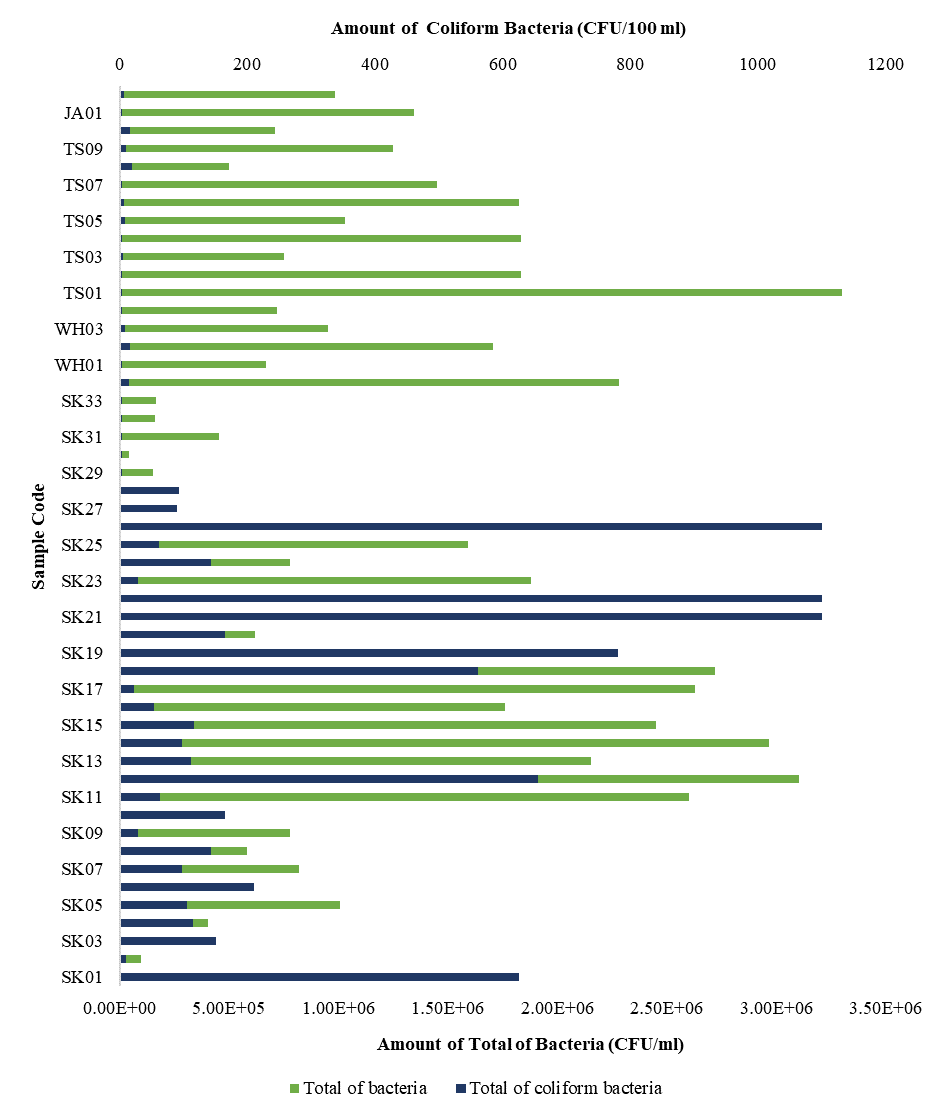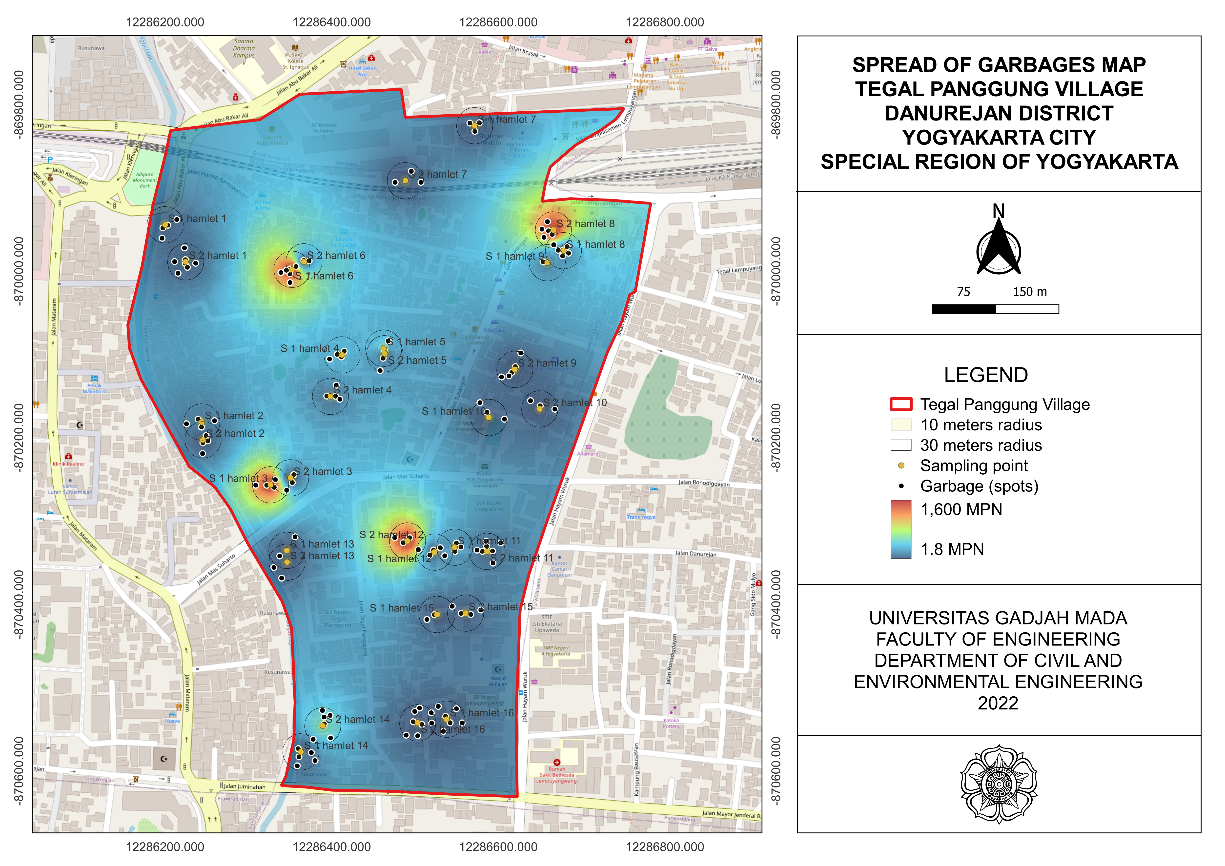Risk Factors of Computer Vision Syndrome: A Review of Ocular Causes Among School and College Students

Introduction: According to the results of a survey published in 2022, mobile phone users have reached two-thirds (67.1%) of the world population. This number has increased by 1.8% over the past year, which is equivalent to 95 million new mobile users. However, gadgets are often misused and can cause a health problem called Computer Vision Syndrome (CVS). This study aimed to identify risk factors for the occurrence of ocular CVS symptoms among school and college students. Discussion: This study was conducted using the literature review method. The main sources for this study were articles obtained through the selection process by setting inclusion and exclusion criteria. This study showed that from a total of 1,763 articles found, 27 articles met the predetermined criteria. A total of 18 of the 27 articles (66.7%) had college student as respondents, and 24 of the 27 articles used cross-sectional research methods (88.9%). In this study, 16 CVS ocular symptoms were found. The risk factors for CVS were individual characteristics (students aged under 18 years and students aged 18–25 years, and gadget users with contact lenses or glasses), smartphone users, individual habits, and ambient lighting while operating gadgets. Conclusions: This study concludes that students are at risk of experiencing CVS if they do not support gadget use with habits such as implementing rest periods between activities using gadgets.
Kemp S. Digital 2022 : Global Overview Report. Singapore: Data Reportal; 2022. 1–63 p. https://datareportal.com/reports/digital-2022-global-overview-report
Boadi-Kusi SB, Abu SL, Acheampong GO, Adueming POW, Abu EK. Association between Poor Ergophthalmologic Practices and Computer Vision Syndrome among University Administrative Staff in Ghana. Journal of Environmental and Public Health. 2020;2020(7516357):1–8. https://doi.org/10.1155/2020/7516357
Wangko S. Histofisiologi Retina. Jurnal Biomedik. 2013;5(3):1–6. https://doi.org/10.35790/jbm.5.3.2013.4342
Khurana AK, Khurana AK, Khurana B. Comprehensive Ophthalmology, 6th ed. In: Duneja T, Katla S, Sharma R, Kumar S, Dogra S, Srivastava G, et al., editors. New Delhi: Jaypee Brother Medical Publishers (P) Ltd; 2015. 1–623 p.
Munshi S, Varghese A, Dhar-munshi S. Computer Vision Syndrome ” A Common Cause of Unexplained Visual Symptoms in the Modern Era. International Journal of Clinical Practice. 2017;71(7):1–5. https://doi.org/10.1111/ijcp.12962
Alamro MA, Alhumaid ZA, Alokaili HR, Alrumayyan AA, El-Toum ME, Alomari RAD, et al. Computer Vision Syndrome among Male and Female Medical Students in King Saud bin Abdulaziz University, Riyadh. International Journal of Medicine in Developing Countries. 2020;4(9):1410–1415. https://doi.org/10.24911/IJMDC.51-1594245805
Al-Manjoumi AM, Bokhari YA, Alsubaie AS, Lasker AY, Alshanbari AA, Almari RO. Risk Factors of Computer Vision Syndrome among College Students and Employees in Jeddah. Annals of Medical and Health Sciences Research. 2021;11(6):1540–1545. https://doi.org/10.54608.annalsmedical.2021.5
Mowatt L, Gordon C, Santosh ABR, Jones T. Computer Vision Syndrome and Ergonomic Practices among Undergraduate University Students. International Journal of Clinical Practice. 2017;72(1):1–7. https://doi.org/10.1111/ijcp.13035
Iqbal M, Said O, Ibrahim O, Soliman A. Visual Sequelae of Computer Vision Syndrome: A Cross-Sectional Case-Control Study. Journal of Ophthalmology. 2021;2021(6630286):1–16. https://doi.org/10.1155/2021/6630286
Statista Research Department. Age Distribution of Internet Users Worldwide 2021. New York: Statista Inc.; 2022. https://www.statista.com/statistics/272365/age-distribution-of-internet-users-worldwide/
UNICEF. More than 175.000 Children Go Online for the First Time Every Day, Tapping into Great Opportunities, but Facing Grave Risks: On Safer Internet Day, UNICEF Calls for Urgent Action to Protect Children and their Digital Footprint. New York: UNICEF; 2018. 1–7 p. https://www.unicef.org/eca/press-releases/more-175000-children-go-online-first-time-every-day-tapping-great-opportunities
Stalker P, Livingstone S, Kardefelt-Winther D, Saeed M. Growing Up in a Connected World. Florence: UNICEF Office of Research – Innocenti; 2019. 1–45 p. https://www.unicef-irc.org/publications/pdf/GKO%20Summary%20Report.pdf
Anshel J. Visual Ergonomics Handbook. Boca Raton: CRC Press–Taylor & Francis Group; 2005. 1–214 p. https://ftp.idu.ac.id/wp-content/uploads/ebook/ip/BUKU%20ERGONOMI/BUKU%20INGGRIS/Visual%20Ergonomics%20Handbook.pdf
Armstrong R, Hall BJ, Doyle J, Waters E. "Scoping the Scope” of a Cochrane Review. Journal of Public Health. 2011;33(1):147–150. https://doi.org/10.1093/pubmed/fdr015
Abudawood GA, Ashi HM, Almarzouki NK. Computer Vision Syndrome among Undergraduate Medical Students in King Abdulaziz University, Jeddah, Saudi Arabia. Journal of Ophthalmology. 2020;2020(2789376):1–7. https://doi.org/10.1155/2020/2789376
Altalhi AA, Khayyat W, Khojah O, Alsalmi M, Almarzouki H. Computer Vision Syndrome Among Health Sciences Students in Saudi Arabia: Prevalence and Risk Factors. Cureus. 2020;12(2):1–4. https://doi.org/10.7759/cureus.7060
Zenbaba D, Sahiledengle B, Bonsa M, Tekalegn Y, Azanaw J, Chattu VK. Prevalence of Computer Vision Syndrome and Associated Factors among Instructors in Ethiopian Universities: A Web-Based Cross-Sectional Study. The Scientific of World Journal. 2021;2021(3384332):1–8. https://doi.org/10.1155/2021/3384332
Maskin SL, Thomas P. Reversing Dry Eye Syndrome: Practical Ways to Improve your Comfort, Vision, and Appearance. London: Yale University Press; 2007. 1–272 p.
Chan C, Bron AJ, Stapleton F, Garrett Q, Craig JP, Singh AD. Dry Eye A Practical Approach Essentials in Ophthalmology. In: Chan C, Singh AD, editors. Sydney: Springer; 2015. 1–103 p.
Mohan A, Sen P, Shah C, Jain E, Jain S. Prevalence and Risk Factor Assessment of Digital Eye Strain among Children using Online E"‘Learning during the Covid19 Pandemic : Digital Eye Strain Among Kids (DESK Study"‘1). Indian Journal of Ophthalmology. 2021;69(1):140–144. https://doi.org/10.4103/ijo.IJO_2535_20
Ganne P, Najeeb S, Chaitanya G, Sharma A, Krishnappa NC. Digital Eye Strain Epidemic amid Covid19 Pandemic – A Cross-sectional Survey. Ophthalmic Epidemiology. 2021;28(4):285–292. https://doi.org/10.1080/09286586.2020.1862243
Gupta R, Chauhan L, Varshney A. Impact of E-schooling on Digital Eye Strain in Coronavirus Disease Era: A Survey of 654 students. Journal of Current Ophthalmology. 2021;33(2):158–164. https://doi.org/10.4103/joco.joco_89_20
Al Rashidi SH, Alhumaidan H. Computer Vision Syndrome Prevalence, Knowledge and Associated Factors among Saudi Arabia University Students : Is it A Serious Problem? International Journal of Health Sciences. 2017;11(5):17–19. https://pubmed.ncbi.nlm.nih.gov/29114189/
Kausar S, Sughra U, Khan WA, Nabeel K. Prevalence of Computer Vision Syndrome (CVS) Symptoms and Its Awareness Among Software Engineering Students of Twin Cities. Al-Shifa Journal of Ophthalmology. 2018;14(1):28–33. https://www.researchgate.net/publication/337621491_Prevalence_of_Computer_Vision_Syndrome_CVS_Symptoms_and_Its_Awareness_Among_Software_Engineering_Students_of_Twin_Cities
Almutairi AH, Alalawi BS, Badr GH, Alawaz RA, Albarry M, Elbadawy HM. Prevalence of Dry Eye Syndrome in Association with the Use of Contact Lenses in Saudi Arabia. BMC Ophthalmology. 2021;21(147):1–7. https://doi.org/10.1186/s12886-021-01912-8
Suwarsi S, Rizqi J, Wahyuningsih M. The Frequency of Gadget Usage or Monitor Exposure and Eyestrain. Jurnal Keperawatan Respati Yogyakarta. 2020;7(2):121–125. https://nursingjurnal.respati.ac.id/index.php/JKRY/article/view/477/245
Rashid SMM, Mawah J, Banik E, Akter Y, Deen JI, Jahan A, et al. Prevalence and Impact of the Use of Electronic Gadgets on the Health of Children in Secondary Schools in Bangladesh : A cross-Sectional Study. Health Science Reports. 2021;4(4):1–9. https://doi.org/10.1002/hsr2.388
Apidian EI. Hubungan antara Frekuensi Berkedip dengan Stabilitas Air Mata selama Penggunaan Visual Display Unit. Thesis. Surabaya: Universitas Airlangga; 2017. https://repository.unair.ac.id/70367/
Sitaula RK, Khatri A. Knowledge, Attitude and Practice of Computer Vision Syndrome among Medical Students and its Impact on Ocular Morbidity. Journal of Nepal Health Research Council. 2018;16(3):291–296. https://doi.org/10.3126/jnhrc.v16i3.21426
Ashwini KV, Apoorva, Kumar S, Nataraju N. An Evaluation of Prevalence and Risk Factors of Computer Related Ocular Problems Among Engineering Students of Bangalore. Ophthalmology and Allied Sciences. 2020;6(2):83–86. http://dx.doi.org/10.21088/oas.2454.7816.6220.2
Chawla U, Yadav P, Chugh JP, Chadha G. Study of Digital Eye Strain due to Extended Digital Device use among Undergraduate Medical Students during the Covid19 Pandemic : A Cross Sectional Study. International Journal of All Research Education and Scientific Methods. 2021;9(3):991–998. https://www.researchgate.net/publication/352441734_Study_of_Digital_Eye_Strain_due_to_Extended_Digital_Device_use_among_Undergraduate_Medical_Students_during_COVID_-_1_Pandemic_A_Cross_Sectional_Study
Iyer JV, Lee SY, Tong L. The Dry Eye Disease Activity Log Study. The Scientific World Journal. 2012;2012(589875):1–8. https://doi.org/10.1100/2012/589875
Lemma MG, Beyene M, Tiruneh MA. Computer Vision Syndrome and Associated Factors among Secretaries Working in Ministry Offices in Addis Ababa, Ethiopia. Clinical Optometry. 2020;2020(12):213–222. https://doi.org/10.2147/OPTO.S284934
Sánchez-Brau M, Domenech-Amigot B, Brocal-Fernández F, Quesada-Rico JA, Seguí-Crespo M. Prevalence of Computer Vision Syndrome and its Relationship with Ergonomic and Individual Factors in Presbyopic VDT Workers using Progressive Addition Lenses. International Journal Environment Research and Public Health. 2020;17(3):1–18. https://doi.org/10.3390/ijerph17031003
Ichhpujani P, Singh RB, Foulsham W, Thakur S, Lamba AS. Visual Implications of Digital Device Usage in School Children: A Cross-Sectional Study. BMC Ophthalmology. 2019;19(76):1–8. https://doi.org/10.1186/s12886-019-1082-5
Demirayak B, Tugan BY, Toprak M, Çinik R. Digital Eye Strain and its Associated Factors in Children during the Covid19 Pandemic. Indian Journal of Ophthalmology. 2022;70(3):988–992. https://doi.org/10.4103/ijo.IJO_1920_21
Kumar SB. A Study to Evaluate the Knowledge Regarding Computer Vision Syndrome among Medical Students. Biomedical and Pharmacology Journal. 2020;13(1):469–473. https://doi.org/10.13005/BPJ/1907
International Labour Office. Ergonomic Checkpoints: Practical and Easy-to-Implement Solutions for Improving Safety, Health and Working Conditions, 2nd ed. In: Niu S, Kogi K, editors. Geneva: ILO Publications; 2010. 1–303 p. https://www.ilo.org/wcmsp5/groups/public/---dgreports/---dcomm/---publ/documents/publication/wcms_120133.pdf
Iqbal M, El-Massry A, Elagouz M, Elzembely H. Computer Vision Syndrome Survey among the Medical Students in Sohag University Hospital, Egypt. Ophthalmology Research: An International Journal. 2018;8(1):1–8. https://doi.org/10.9734/or/2018/38436
Mufti M, Sayeed SI, Jaan I, Nazir S. Does Digital Screen Exposure Cause Dry Eye? Indian Journal of Clinical Anatomy and Physiology. 2019;6(1):68–72. https://doi.org/10.18231/2394-2126.2019.0017
Bahkir FA, Grandee SS. Impact of the Covid19 Lockdown on Digital Device "‘ Related Ocular Health. Indian Journal of Ophthalmology. 2020;68(11):2378–2383. https://doi.org/10.4103/ijo.IJO_2306_20
Wang L, Wei X, Deng Y. Computer Vision Syndrome during SARS-CoV-2 Outbreak in University Students: A Comparison Between Online Courses and Classroom Lectures. Frontiers in Public Health. 2021;9(1):1–7. https://doi.org/10.3389/fpubh.2021.696036
Basnet A, Basnet P, Karki P, Shrestha S. Computer Vision Syndrome Prevalence and Associated Factors Among the Medical Student in Kist Medical College. Nepalese Medical Journal. 2018;1(1):29–31. https://doi.org/10.3126/nmj.v1i1.20396
Cheema MN, Anwar S, Naz MA, Saleem A, Nawaz MM. Prevalence of Computer Vision Syndrome and its Risk Factors among Medical Students of Islam Medical & Dental College, Sialkot. Pakistan Journal of Medical & Health Sciences. 2019;13(3):553–555. https://pjmhsonline.com/2019/july_sep/pdf/553.pdf
Patil A, Bhavya, Chaudhury S, Srivastava S. Eyeing Computer Vision Syndrome: Awareness, Knowledge, and its Impact on Sleep Quality among Medical Students. Industrial Psychiatry Journal. 2019;28(1):68–74. https://doi.org/10.4103/ipj.ipj_93_18
Pratiwi EA, Ananda L, Rispawati BH, Safitri RP. Relationship of Gadget Use with Sleep Quality in Pandemy Covid19 in School Age Children in State Elementary School Goa Jereweh District West Sumbawa. Strada: Jurnal Ilmiah Kesehatan. 2020;9(2):1680–1686. https://doi.org/10.30994/sjik.v9i2.497
Saxena R, Gupta V, Rakheja V, Dhiman R, Bhardawaj A, Vashist P. Lifestyle Modification in School"‘Going Children Before and After Covid19 Lockdown. Indian Journal of Ophthalmology. 2021;69(12):3623–3629. https://doi.org/10.4103/ijo.IJO_2096_21
Gammoh Y. Digital Eye Strain and its Risk Factors among a University Student Population in Jordan: A Cross-Sectional Study. Cureus. 2021;13(2):1–8. https://doi.org/10.7759/cureus.13575
Aldarrab A. Awareness and Practice Regarding Use of Digital Devices and Ocular Health among Saudi Adolescents. Oman Journal of Ophthalmology. 2022;15(1):73–77. https://doi.org/10.4103/ojo.ojo_283_21

This work is licensed under a Creative Commons Attribution-NonCommercial-ShareAlike 4.0 International License.
1. Copyright of all journal manuscripts is held by the Jurnal Kesehatan Lingkungan.2. Formal legal provisions to access digital articles of electronic journal are subject to the provision of the Creative Commons Attribution-ShareAlike license (CC BY-NC-SA), which means that Jurnal Kesehatan Lingkungan is rightful to keep, transfer media/format, manage in the form of databases, maintain, and publish articles.
3. Published manuscripts both printed and electronic are open access for educational, research, and library purposes. Additionally, the editorial board is not responsible for any violations of copyright law.
JKESLING by UNAIR is licensed under a Creative Commons Attribution-ShareAlike 4.0 International License.







































